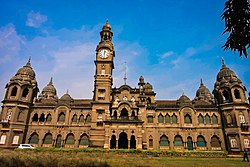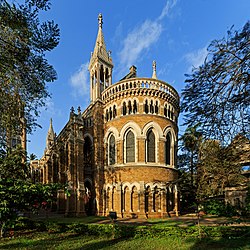- Bibi Ka Maqbara at Aurangabad, a replica of the Taj Mahal built during the reign of Aurangzeb. It was commissioned by his son Azam Shah.
- The Fort campus of the University of Mumbai was established in 1857.
- The present building of the Chhatrapati Shivaji Terminus was designed by Frederick William Stevens in the Victorian Gothic style and completed in 1888. [5]
This article needs additional citations for verification .(October 2016) |

Maharashtra state in India is known for its caves and cliffs. The Buddhist monks first started these caves in the 2nd century BC, in search of serene and peaceful environment for meditation, and they found these caves on the hillsides. [2] [1]
Contents
- Medieval
- Hindu
- Indo-Islamic
- Maratha
- Colonial
- British Colonial
- Gallery
- Notes
- References
- Citations
- Bibliography

Buddhist and Hindu cave temples at Ellora and the Ajanta Caves contain fine artistic design elements and India's oldest wall paintings can be seen here. Maharashtra's famous rock-cut caves have several distinct artistic elements though sculptures of the time are regarded to modern viewers as stiff and not dynamic. The Buddhist caves, particularly the older ones, are either temples (Chaityas) or monasteries (Viharas).






